The Huntington’s blog takes you behind the scenes for a scholarly view of the collections.
Knife to the Grindstone
Posted on Tue., May 6, 2014 by
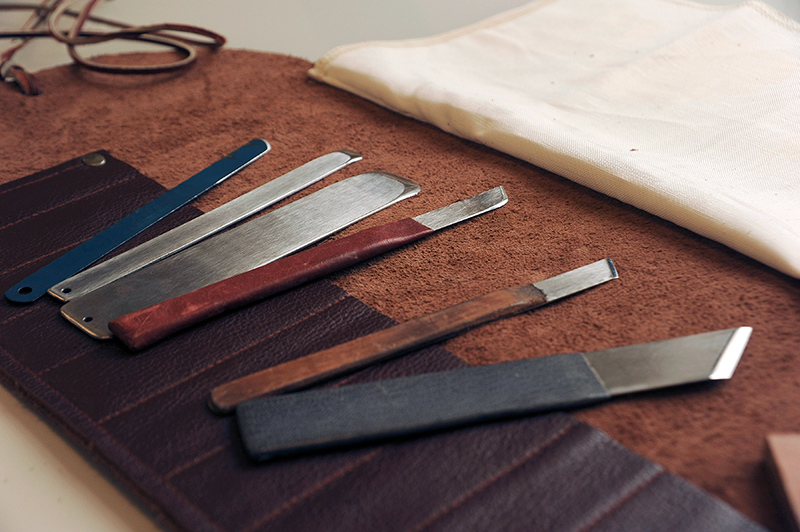
Knives are essential tools of book and paper conservators.
Of all of the spaces in the Library’s conservation lab, the “dirty room” is perhaps the most mysterious. In it you will find belt grinders with various grits of sandpaper, diamond stones, large tiles of marble, all manner of abrasive material, and many other esoteric tools that would be at home in fine woodworking shops. “What,” you might ask, “is this odd collection of equipment doing in a conservation lab?” Rest assured that these items aren’t for nefarious purposes but rather for the day-to-day maintenance of our knives.
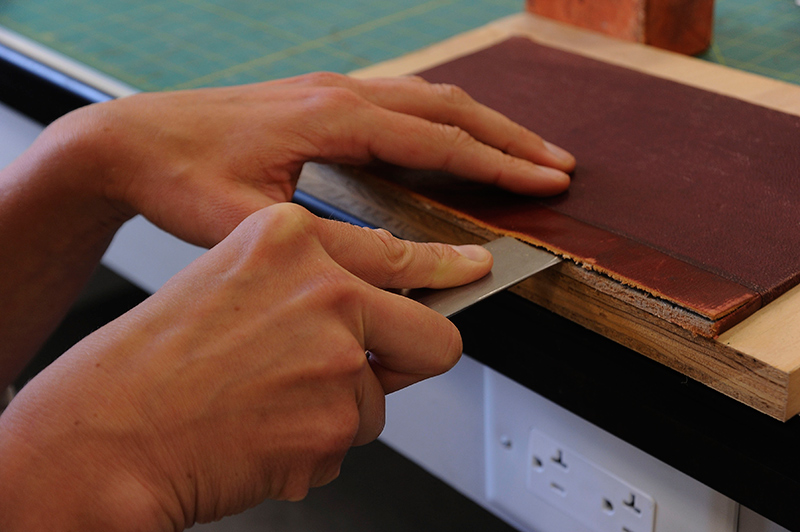
Lifting knives allow conservators to lift leather, cloth, and paper so that new material can be tucked underneath the original.
When you think of a book conservator, you probably don’t immediately picture a person wielding a dangerously sharp knife. We, however, would be lost without our blades. There are many conservation treatments and projects that require sharp knives. For example, when we repair older books, we use knives to lift leather, cloth, and paper (shown above) so that new material can be tucked underneath the original. Other times, a blade comes in handy for paring the edges (shown below) of goat or calf leather for full-leather bindings. Without sharp knives, the tasks at hand would seem insurmountable, or at least much more cumbersome.
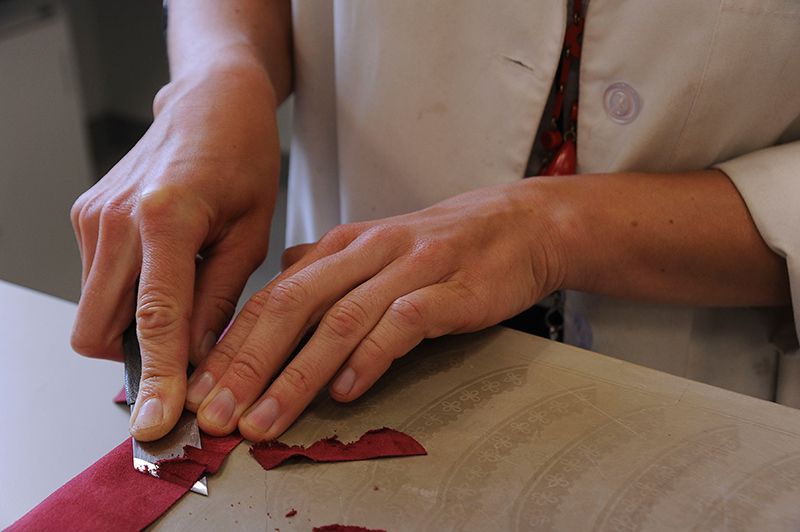
One type of knife is used for paring the edges of leather.
There are three main types of knives (see below) used in bookbinding and conservation. Each style has its own virtues, and most conservators and binders develop preferences for knife shapes. Every style has two distinguishing factors: the country of origin and the uniquely shaped profile. French-style knives have rounded cutting edges and are characterized by their somewhat narrow wooden handles. Swiss knives also have rounded cutting edges, in addition to an even, symmetrical look and no tapered handles. Lastly, English-style knives are shaped at an angle with wider handles. I have determined that certain styles are better for different tasks, which means that I prefer the English style for leather paring and the Swiss style for lifting older material from book covers.
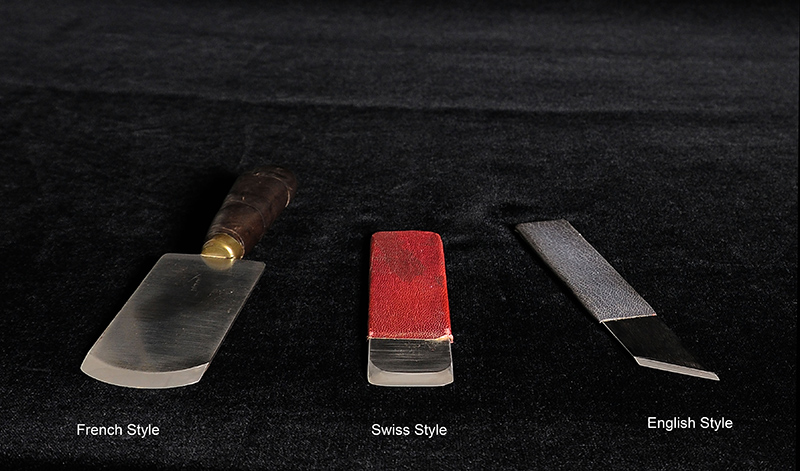
The three main types of knives used in bookbinding and conservation.
Knife sharpening is a pretty personal thing: everyone has his or her own way of doing it. I have met bookbinders and conservators who do nothing more than scrape their paring knives against pieces of binder’s board and call it good. Others take great care to meticulously sharpen their knives before each use. Call me a tool enthusiast, but after shaping stainless steel into a blade from scratch, I finally understood how important it is to properly care for a knife. After many hours of struggling at the grinding wheel, my fingers bloodied and bandaged, I felt so proud at seeing my reflection in a well-polished and perfectly shaped edge. And after creating or finding appropriate knives, the process of knife sharpening helps maintain responsive and trustworthy tools with minimal effort.
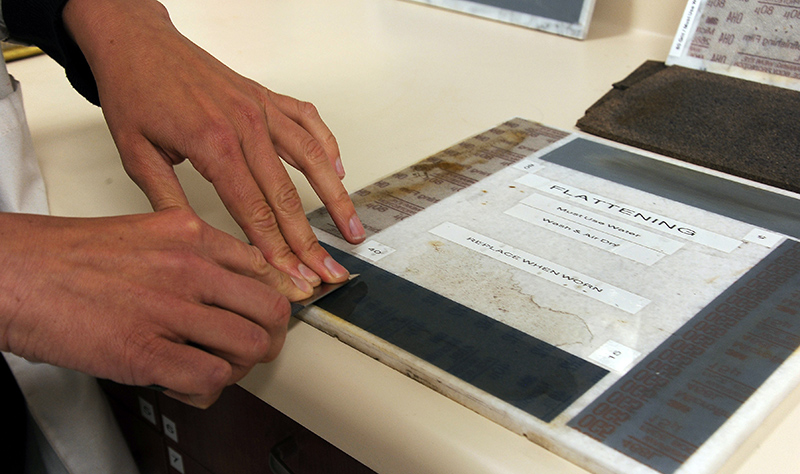
When sharpening a knife, conservators start with coarser grits of abrasive material and then move on to finer grits.
When sharpening a knife, I generally start with coarser grits of abrasive material and move toward finer grits (see above). Moving through a series of sandpapers, I work each side of the blade against the material until the sharpened edges meet at the cutting edge—this creates a nice burr that is used to cut through some of the toughest materials. After these steps, I finish the sharpening process with a leather strop (pictured below) to gently smooth the edges of the blade, creating a lovely shine.
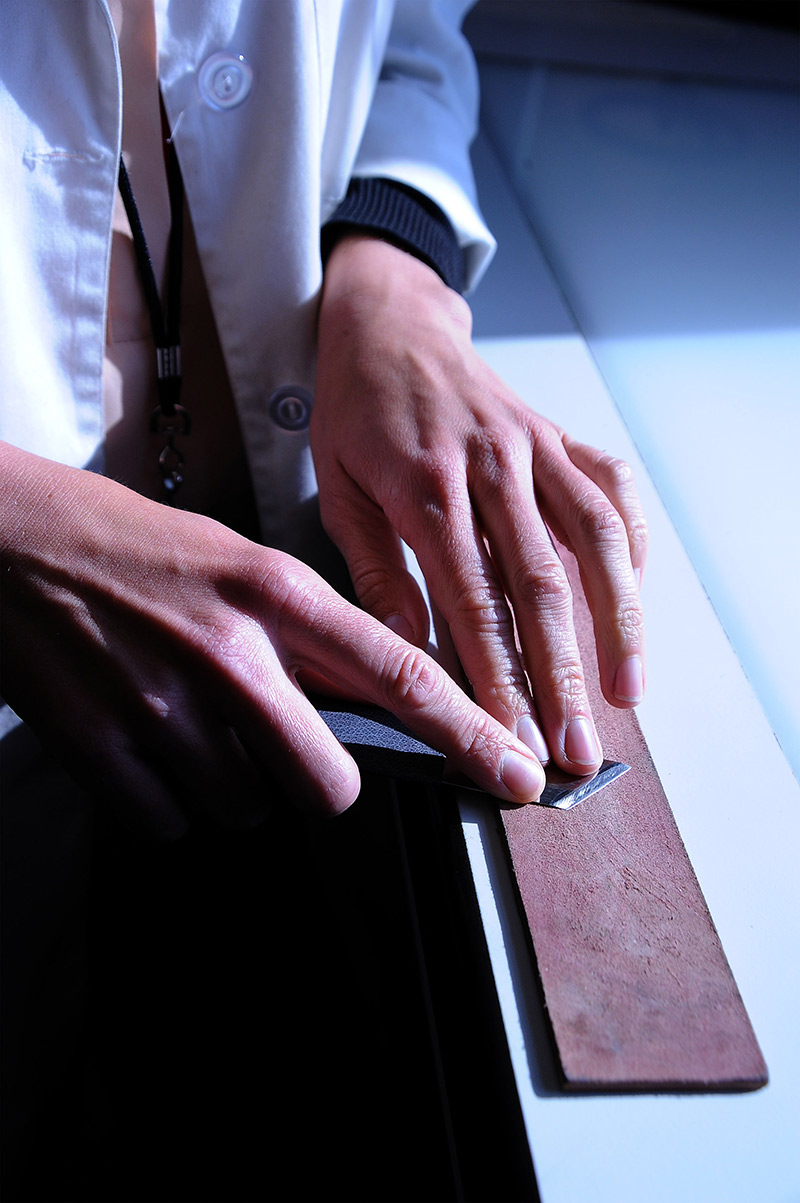
After sharpening, the blade is polished on a leather strop to smooth its edges.
There is something so tangible and satisfying about running my blade rhythmically along a strop and knowing that when I care for my tools, I am also honing a deeper appreciation for my craft. Whatever a conservator’s knife-sharpening techniques may be, the care and maintenance of one’s equipment is paramount to fluid and successful craftsmanship.
You can read more about the conservation lab in the cover article of the spring/summer 2011 issue of Huntington Frontiers . You can also find out more about conservation at The Huntington in a new video profile of conservator Jessamy Gloor, part of a suite of behind-the-scenes videos recently installed in "The Library Today," the education gallery adjacent to the permanent exhibition "Remarkable Works, Remarkable Times: Highlights from the Huntington Library."
Anna Shepard is a book & paper conservation technician at The Huntington.